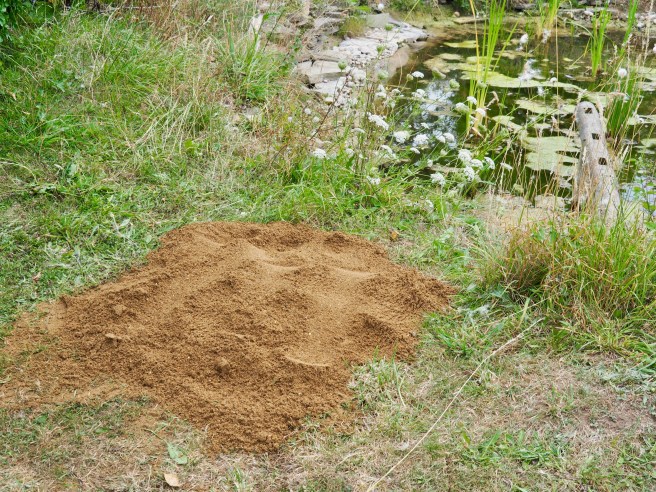
Sandwich Bay, a short distance up the coast from us, is a special place for nature. A large sandy bay with marshes behind and located close to the shortest crossing to mainland Europe, it is a migration hotspot and we went up there a couple of days ago to see the seven Wood Sandpipers that were being reported there. A few of these birds usually arrive in the UK every year on passage but we had never seen one before.
While we were there we also went to the bay to stretch the dog’s legs but didn’t get much further than the sandy car park where we found a colony of Bee-wolves:

These are wasps that live in a colony of tunnels in the sand:

They prey on Honey Bees – paralyse them and fly back to their tunnel carrying them upside down.






As we watched, we saw numerous wasps coming in carrying Honey Bee prey. It was completely horrible and totally fascinating both at the same time.
This encounter with a sand-dwelling species, along with seeing House Sparrows sand-bathing on the coastline below the meadows, gave us the idea to create a sand pit in the meadows to introduce this different type of habitat here and see if anything uses it.



We do have an existing shallow-sand beach by the side of the hide pond and here is someone who loves to use it:



Here is the adult female at the wild pond:

She has a similarly over-the-top bathing technique:

Also at the wild pond is a speckly juvenile female:

She may be one of the two juvenile females below that I photographed here a fortnight or so ago:

This juvenile below, however, is a male with red in his moustache:

He seems to be following in his parents footsteps when it comes to bathing:

The bath the Woodpecker is using is a new one that we put out for the injured male Badger, Scarface. The ponds are so low at the moment that we worried that he would have difficulty getting down to the water with his injured leg.
Although the bath immediately proved extremely popular with many birds and Foxes, there have been no Badgers drinking from it so far. However, I have good news to report: Scarface is now walking on all four legs again and the swelling has gone down:

That is such a relief.
Here is an unusual view of one of the female Badgers:

As the hot weather continues, all three of the new mini-ponds are being well used:


These ponds were so cheap and easy to do, I can’t think why it has taken us until now to think of doing them.
In much the same way as the Bee-wolf was taking Honey Bees back to its nest as food for its young, here in the meadows is a Kite-tailed Robberfly (Machimus atricapillus) with its prey, a paralysed Hoverfly, going back to the Robberfly’s nest.

But on a less gory note, below is a very striking Jersey Tiger Moth – probably an immigrant from France:

A Comma Butterfly is so named because of the white comma mark on the underside of its hind-wings:

At the beginning of this post, I mentioned Sandwich Bay and this is where the bird ringer does much of his ringing. He has sent me some photos of a Cuckoo that he ringed there this week:



Such long wings. This is a juvenile and it is an interesting thought that its father is probably already migrating back through Africa.

Judy. Fabulous photographs and narrative. You are building something very special at the meadows. Thanks for having us at the weekend. Ian & Ali xxx